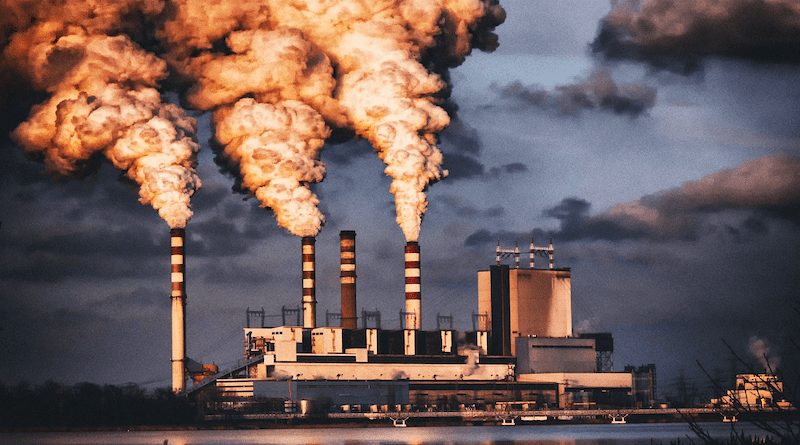Unrealistic Plans To Crack Down On US Power Plant Emissions Won’t Work – OpEd
The Biden administration’s Environmental Protection Agency (EPA) has proposed a new plan that would limit carbon emissions from power plants, despite rising electricity demand. Its stated intention is to force utilities to rely much more heavily on hydrogen and other green fuels, coupled with carbon capture technologies, to generate electricity.
The EPA’s proposed rule would force power plant owners to decide virtually overnight whether to install unproven and absurdly expensive carbon capture technologies or close their plants altogether to meet emission reduction targets—an unreasonable choice that’s being presented at a time when the U.S. Energy Department estimates that the U.S. will need to double its generating capacity by 2050 just to keep up with soaring electricity demand.
The likely consequences couldn’t be clearer. As James Robb, president and CEO of the North American Electric Reliability Corporation, recently warned at the Federal Energy Regulatory Commission’s (FERC) annual reliability conference, the “rapid, often disorderly transformation of the generation resource base” has increased the potential for “more frequent and more serious long-duration reliability disruptions, including the possibility of national-consequence events.” Translation: The rush to eliminate fossil fuels from the electric power mix could potentially expose America to large-scale brownouts or blackouts.
We’ve been down this road before
President Barack Obama’s Clean Power Plan, promulgated in 2015 under the authority of the Clean Air Act of 1970 (as amended), sought to replace coal-fired electricity with renewables and more environmentally friendly natural gas. Last year, a six-to-three Supreme Court majority struck down that plan, ruling in West Virginia v. EPA that the plan overstepped the EPA’s regulatory authority.
Going further than Obama’s original Clean Power Plan, which at least acknowledged the importance of natural gas, the Biden administration’s response to such worries has been to double down on restrictions: proposing to eliminate the coal and gas-fired power plants that keep America’s machines running and our lights on.
This, Clair Moeller, president and COO of Midcontinent Independent System Operator, Inc., told the FERC conference, “is bringing about a level of complexity and risk that is unprecedented.”
Given current technologies, the presumption that renewables can entirely replace coal’s baseload power is a fantasy. Wind and solar power are intermittent, whereas coal plants supply electricity around the clock, day in and day out. Moreover, power from coal-fired plants is dispatchable on demand because many utilities maintain large coal supplies on-site.
Green dreams and extravagant flops
The current debates about power generation focus on its environmental impacts rather than on the reliability of the grid that delivers power to homes and businesses. Coal and natural gas-fired generators not only are essential for supplying reliable baseload power but also as backup power sources when renewables are offline. The efficiency of solar panels degrades in extreme heat or cold. Windmill blades spin only when air is moving past them, and despite its greenness, nuclear power cannot be ramped up or down quickly in response to changes in electricity demand.
That’s why utilities and major grid operators are voicing concerns about grid reliability and the prospect of significant power shortages.
Green dreams aside, coal continues to generate a significant proportion of America’s electric power—about 19% overall. In some states the percentages are much higher: 74% in Missouri, 57% in Indiana, 70% in Kentucky, 41% in Colorado, 42% in Wisconsin, 61% in Utah, and 90% in West Virginia. All told, coal is the most important source of power generation in 18 states.
Another part of the story is that the U.S. currently lacks the infrastructure (transmission capacity) for carrying wind and solar energy from rural areas or offshore sites to population and manufacturing centers. Building out the needed infrastructure will require significant spending, which ultimately will rest on the shoulders of taxpayers or utility customers.
For years, NERC officials have been warning that the rapid loss of baseload power plants poses risks to America’s reliable electricity supply. The question now is how many shuttered coal plants will have to be brought back into operation—as Germany has been forced to do to keep people there from freezing in the dark during the winter—to reduce the gap between electricity demand and supply.
Just because a technology for generating power is technologically feasible doesn’t make it economically viable. Even a billion-dollar subsidy didn’t stop the giant Danish energy conglomerate, Ørsted, from walking away from a major wind farm project off New Jersey’s shores.
One of the lessons learned from that extravagant flop is that fossil fuels will be essential for the foreseeable future despite the administration’s unrealistic plans.
This article was also published in Fortune

